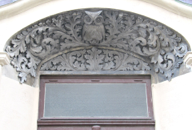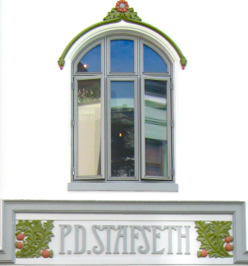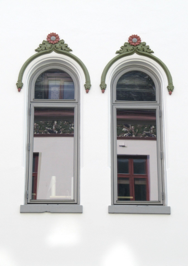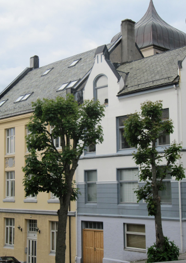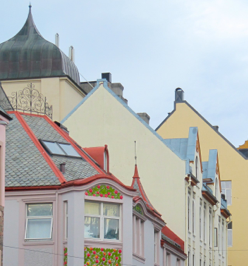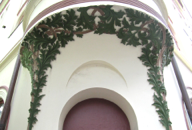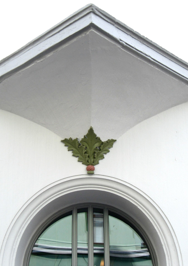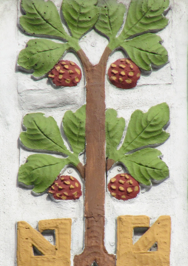Architectural Details
ÅLESUND, norway
scandinavia
July 4, 2010


Architectural Details
ÅLESUND, norway
scandinavia
July 4, 2010




The Jugendstil architecture is part of a movement that was strongly influenced by the Czech artist, Alphonse Mucha, who produced lithographic posters, one of which appeared on the streets of Paris on January 1, 1895. This poster, an advertisement for Gismonda, a play written by Victorien Sardou and starring Sarah Bernhard, became an overnight sensation with this new graphic style referred to as Style Mucha or “Mucha Style”. The curvilinear lines and floral motifs in the graphic design was later named Art Nouveau or “New Art”. This new style caught on in many European countries, named Jugendstil or “Young Art” in Germany, Arti Nuova in Italy, Arte Joven in Spain, Catalan Modernismo in Barcelona, Sezessionstil in Austria (named for the Secessionist artists working in this style) Glasgow Style in Scotland (based on the architect, Charles Rene Mackintosh) and Tiffany Style in America (based on the work of Louis Comfort Tiffany). The style, popular between 1895 and 1910, served as a bridge between the older, classical architecture of the 19th century and the International modernist style* that appeared in the early 20th century. Henry and I were charmed by Norway’s interpretation of Art Nouveau, interpreted by the Norwegian architects and evident in Ålesund along the streets of Apotekergata, Lovenvoldgata, and Konegensgata. As we walked around this charming town, with its distinctive turrets, spires and imaginative ornamentation, we couldn’t help but want to record the lively and colorful architectural elements that embellished many of the buildings here. The Art Nouveau of Ålesund, like its counterparts in other Nordic countries, was integrated into a National Romantic Style, with the examples of this in Ålesund still intact today. To honor Kaiser Wilhelm, his aid and influence, one of the most frequented streets in Ålesund is named after him.
*The International Style that followed Art Nouveau was championed by many European architects including Le Corbusier in France and Walter Gropius in Germany. The Bauhaus School in Germany was the intellectual center for design that followed these new, modernist ideas and philosophies, until it was closed in the late 1930’s during World War II and Hitler’s Third Reich.
PHOTOS: Left Column: 1. Intricate stone carving beneath a cornice. The owl is the central motif, surrounded by oak leaves. 2. A painted wreath of carved stucco above the arched doorway of a house on a street corner. 3. View of a hilltop street in Ålesund. A corner house with turret is especially elegant. 4. A stylized tree with berries, painted in bright colors, decorated the side of one of Ålesund’s houses. 5. Leaf and berry motif decorate the same house using nature as its inspiration. Center, Top: A window detail above the artful naming of the building. Center, Middle: Colorful buildings with interesting architectural details form a nice profile on an Ålesund street. Center, Bottom: A more geometric glass design, complimented by its carved stucco architectural details. Right Column: 1. Charming, colorful detail beneath a window cornice. 2. A view of several houses in Ålesund, some have added skylights to the otherwise pure Jugenstil/Art Nouveau architecture, c. 1904-07. 3. A pair of ornamented windows, their glass reflecting the architectural details of the building across the street.
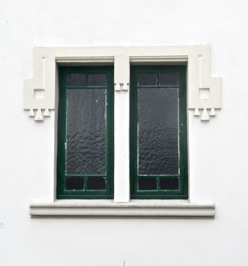
Jugendstil Architecture
